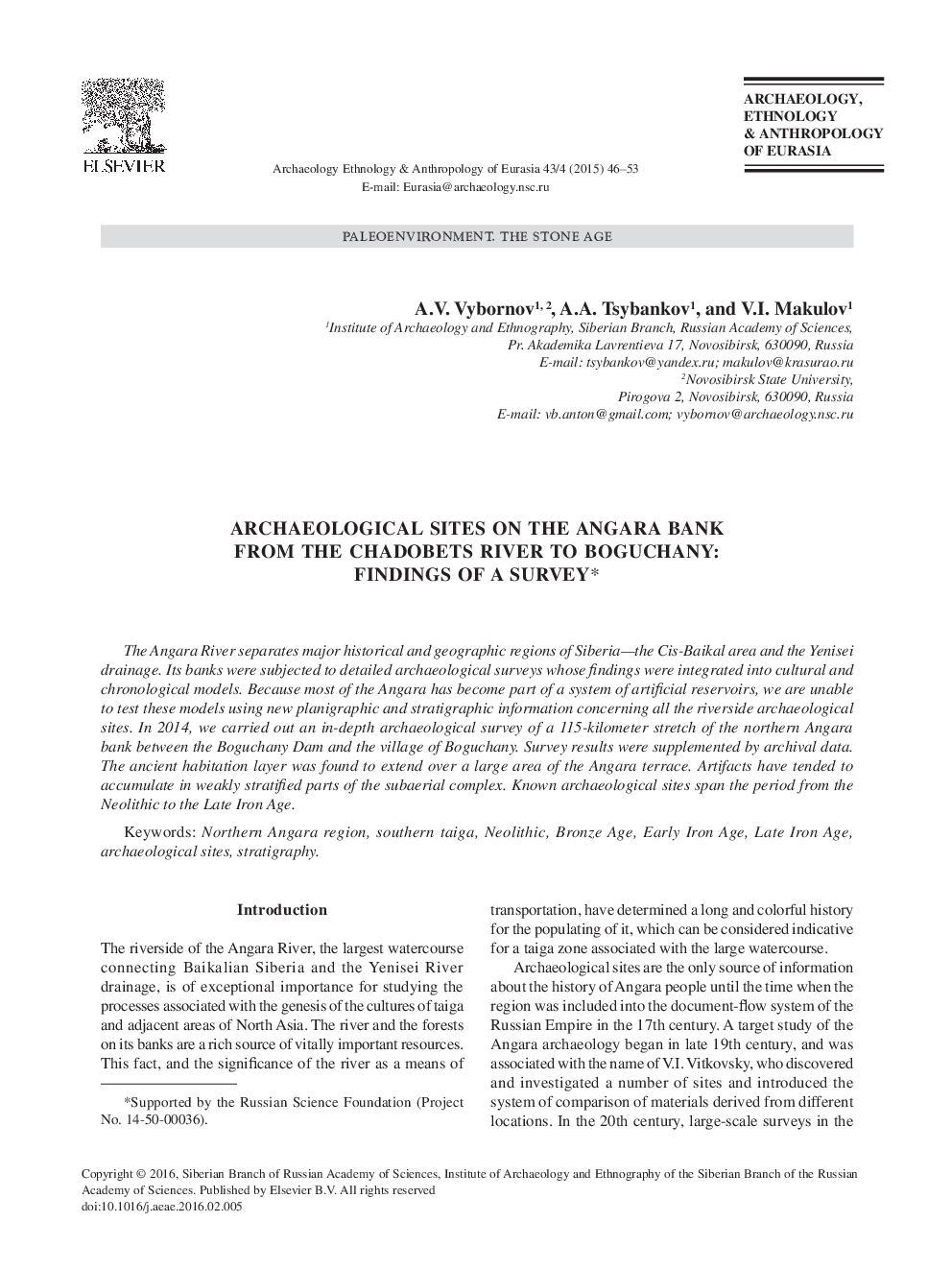| Article ID | Journal | Published Year | Pages | File Type |
|---|---|---|---|---|
| 1034180 | Archaeology, Ethnology and Anthropology of Eurasia | 2015 | 8 Pages |
Abstract
The Angara River separates major historical and geographic regions of Siberia-the Cis-Baikal area and the Yenisei drainage. Its banks were subjected to detailed archaeological surveys whose findings were integrated into cultural and chronological models. Because most of the Angara has become part of a system of artifi cial reservoirs, we are unable to test these models using new planigraphic and stratigraphic information concerning all the riverside archaeological sites. In 2014, we carried out an in-depth archaeological survey of a 115-kilometer stretch of the northern Angara bank between the Boguchany Dam and the village of Boguchany. Survey results were supplemented by archival data. The ancient habitation layer was found to extend over a large area of the Angara terrace. Artifacts have tended to accumulate in weakly stratified parts of the subaerial complex. Known archaeological sites span the period from the Neolithic to the Late Iron Age.
Related Topics
Social Sciences and Humanities
Arts and Humanities
History
Authors
A.V. Vybornov, A.A. Tsybankov, V.I. Makulov,
